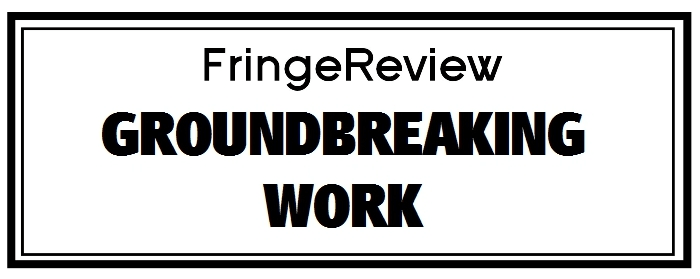FringeReview UK 2019
Peter Sulski, Solo Viola
Peter Sulski

Genre: Live Music, Music, Solo Performance
Venue: Chapel Royal, North Road, Brighton
Festival: FringeReview UK
Low Down
Violist Peter Sulski plays solo works by Paul Gregory, Joanne Johnson, Barry Mills, Howard Blake and Peter Copley.
Review
You might say Violist Peter Sulski is the south’s answer to the great Garth Knox, though that does them both a disservice. Sulski, who like Knox specializes in contemporary music for solo viola (he also plays in ensembles, or with piano) is a different kind of performer. Huskier in tone, broader in his choice of contemporary works, he’s also more eclectic in his tastes, though with a strong accent on modernism. In a country renowned for its viola-players, it’s piquant too that both these performers are American.
It was hoped that all four living of the five composers would be present; in the event two were. First we were led to a surprise, Paul Gregory co-founder of these concerts and famed internationally as a guitarist has written his three-movement Sonata Italienne. More of the warm south, it’s in fact a meditative work that accelerates as it move from the elegaic through an andante to a terrific scherzo-finale. A four-note descending and ascending figure weaves its way through this work, both haunting and memorable. It’s distinctly contemporary yet accessible with a tonal amplitude cut across by gestural flicks and gritty pizzicati. It’s a strong work worth hearing again in the same concert – though several qualified for that I hope Sulski records it.
Joanne Johnson (1969-97) died absurdly young. Her Blood Sky is a kind of Introduction and Allegro, but it’s a far more elliptical work than that. First, there’s a broken etiolated surface, where Sulksi visits layers and high-registering notes, but then a layering and sudden distance too. It’s as if the piece in is playing were also moving away from itself to get a better perspective. It’s a fine active work, an edgy voice tragically silenced early.
Another surprise. Those who know Barry Mills’ work from his later quietist pieces – sumptuous harmonies, intensely visual takes on early modernism – won’t be prepared for this. It’s Three Movements, the middle one dedicated to his future wife (in the audience too). Dating from the late 1980s, it’s full of the energy of someone absorbed in the modernism of his recent influences but already sounding different. At this time too, he’s not taking the easy route of neo-romanticism or minimalism, already strongly present in some of his contemporaries. His alter quietism might have suggested these as building blocks. Here we learn – again – Mills’ process of self-discovery is all-encompassing.
The first and particularly last movements are spiky, powerfully realized explorations of the viola’s expressive range: husky, gritty, throaty with sudden etiolated movements, use of pizzicato and a language both expressively urgent and suddenly shafted with the later Mills in the slow movement. Even here though it’s a conversation, perhaps a sonic transcription of talk. The skittering finale’s exciting and bracing, with an acceleration I’ve not often heard in Mills except in some orchestral works. Three Pieces are a superb addition to the viola repertoire.
Howard Blake’s huge opus – something like 800 works – gradually escapes the shadows of The Snow Man, though his idiom’s certainly melodic and doesn’t flinch from singable tunes. Post-romantic tonality’s best described as a latter-day Howells, say close to his contemporary Geoffrey Burgon and with a slightly sweeter tooth. Though modernists will hate it, a few decades on it won’t make any difference and we should accept the parallel universe. Works like Blake’s Piano Quartet might gradually gain a place in the repertoire.
His Prelude for Viola is a kind of Introduction and Lark Ascending, an allegro of soaring harmony with a melodic VW touch, a sound-world close to Vaughan Williams’ great work, but at the same time refracted through the darker-hued instrument, the solo line freighted with a flickering lyricism that’s Blake’s own – as distinct from his more toothsome melodies.
Peter Copley’s Three Portraits was something else. In effect it’s another Sonata, though its Andante-Allegro, Sarabande and Tarantella suggest a mix of 18th century and early 20th century suites. But it sounds like a Sonata and is gritty, powerful and absorbing. There’s a searing melodic power interfused with all sorts of cross-bowing, pizzicato, ponticello (near the bridge) and a battery of techniques loosed on a bony frame.
The first movement accelerates as its markings suggest. The Sarabande’s restless but as much a point of rest as you’d expect. The Tarantella stamps out the poisons with an almost moto perpetuo vigour that’s infectious and gifts a rousing conclusion.
Every one of these pieces could have been encored, since we’re not familiar with them and ought to be. We need more concerts like this; more Peter Sulski too. His command is necessarily sovereign, whose effortlessly morphing from hard-grained modernism to post-pastoral is effortless. Several composers here form part of the New Music Brighton collective. Such programming puts Brighton on the musical map as promoters of the new, the exciting, the tragically remembered.


















































